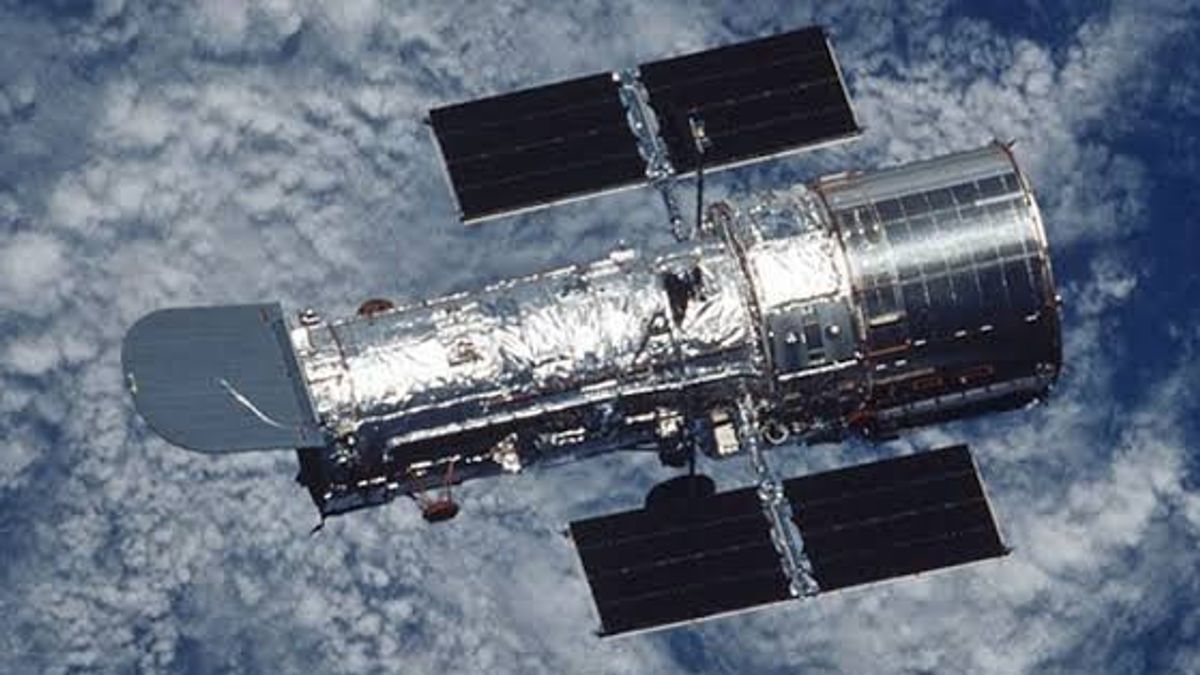JAKARTA - For more than three decades the Hubble Space Telescope has been working to find hidden galaxies, but it is reported that the telescope will continue to decline from its current location before finally falling into Earth's atmosphere and burning up, possibly in the 2030s.
Since last served by NASA's retired space shuttle program in 2009, the 32-year-old observatory has descended some 15 miles.
Currently, the Hubble Telescope circles the Earth at an altitude of 335 miles but NASA wants to get it back up to 372 miles, where it was when it was launched in 1990.
For the Hubble Telescope to continue operating for much longer, its orbit must be raised, a complex but doable operation that NASA is currently considering.
To achieve this, the United States (US) space agency has submitted a request for ideas. He wants to use the personal spacecraft to help increase the orbit of the Hubble Telescope and expand its mission so it can continue to work with NASA's James Webb Telescope.
NASA invited private companies to submit their proposals for ideas for improving the location of the telescope, which would serve as a demonstration of how to perform similar operations on satellites.
Early last year, Elon Musk's SpaceX had put forward a proposal for a Dragon capsule that would match what a regular space shuttle would do and give the Hubble Telescope a longer year's lease.
NASA said at the time it would explore this in a feasibility study, but has now issued a Request for Information proposal from all private companies on how the Hubble Telescope could go to a higher orbit.
All companies can propose their own Hubble Telescope service studies based on the use of different rockets or spacecraft. Requests will remain open until January 24th.
"This study is an exciting example of the innovative approaches NASA is currently exploring through private-public partnerships," said associate administrator for the Science Mission Directorate at NASA HQ, Thomas Zurbuchen.
"As our fleet grows, we want to explore opportunities to support the most powerful and superlative science missions."
As well as helping the Hubble Telescope, if a solution can be reached it could extend the missions of other spacecraft and older satellites, especially those in near-Earth orbit.
Cited from Digital Trends, Monday, January 2, SpaceX's Dragon capsule is currently used to carry astronauts to and from the International Space Station (ISS), but getting to the Hubble Telescope will be a different challenge.
The feasibility study by Musk's company is not just limited to upgrading the telescope's orbit. It will also examine how SpaceX can send a commercial crew in one of its Dragon capsules to service some of the Hubble Telescope's hardware.
SpaceX owns the Polaris program, its private human spaceflight program, hosted by commercial astronaut Jared Isaacman. Isaacman was part of the Inspiration4 mission which was the first mission into space with an all-civilian crew.
The Polaris program also has plans for further private flights using Crew Dragon and Starship.
"SpaceX and the Polaris Program want to expand the boundaries of today's technology and explore how commercial partnerships can creatively solve challenging and complex problems," said Jessica Jensen, vice president of Customer Operations & Integration at SpaceX.
"Missions like serving Hubble will help us expand space capabilities to eventually help us all achieve our goal of becoming a multiplanetary civilization exploring space," he added.
The English, Chinese, Japanese, Arabic, and French versions are automatically generated by the AI. So there may still be inaccuracies in translating, please always see Indonesian as our main language. (system supported by DigitalSiber.id)













